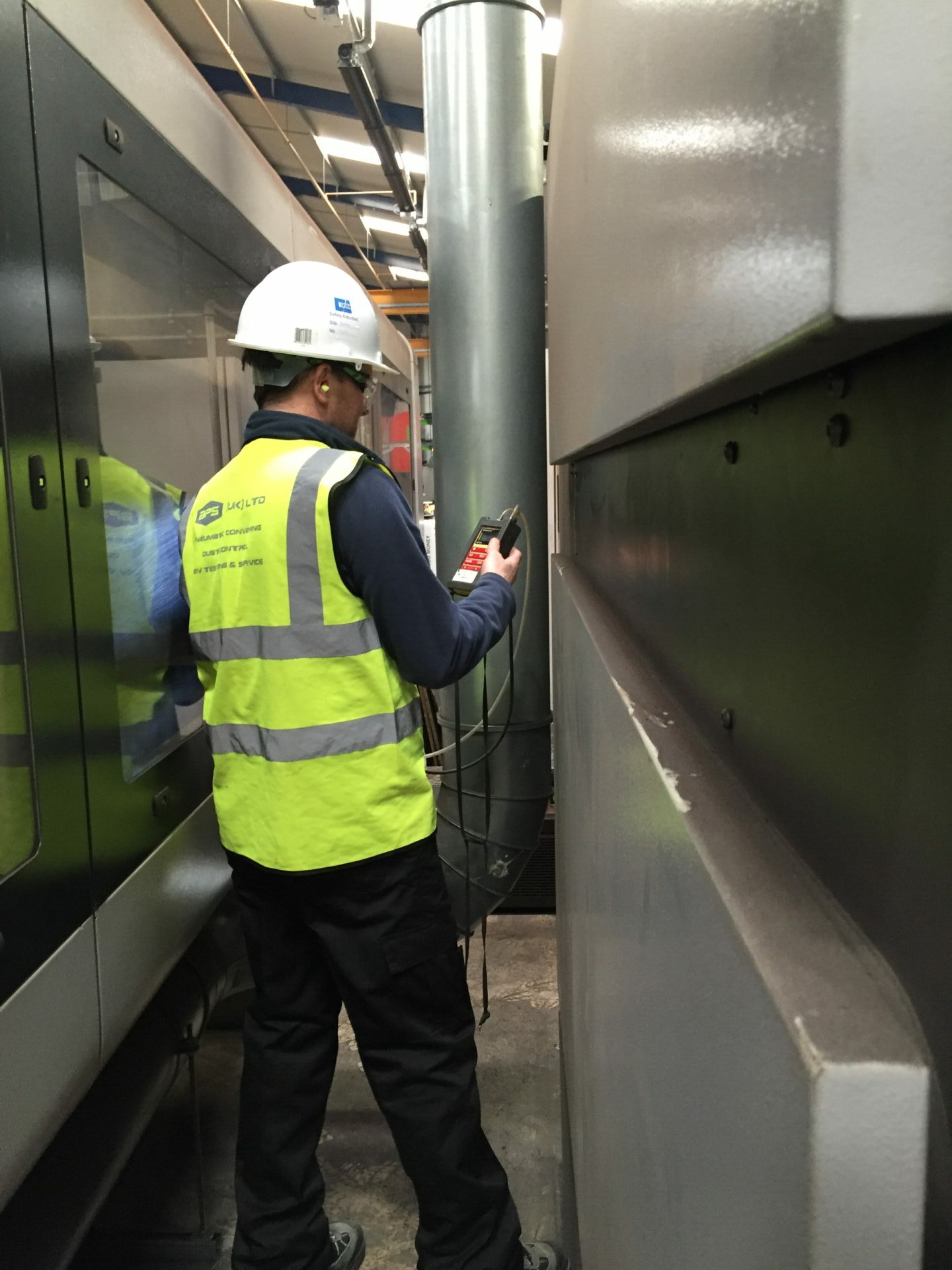How can LEV Testing improve safety in your premises?
In the fast-paced industrial landscape, ensuring the safety and well-being of employees is paramount. As regulations tighten and awareness of occupational hazards grows, businesses must stay ahead of the curve to protect their workforce and maintain compliance.
Research from Imperial College London found that poorly ventilated environments can negatively impact whole-life health, but many severe health problems can be prevented with proper ventilation systems. LEV testing has emerged as a proactive solution to address these concerns, offering tangible benefits in terms of employee health, regulatory compliance, and operational efficiency.
In this blog we delve into how LEV testing can elevate safety standards within your premises, safeguarding both personnel and productivity.
What is LEV Testing?
Local Exhaust Ventilation (LEV) testing is a comprehensive process aimed at assessing the effectiveness of ventilation systems within the workplace. These systems are designed to control exposure to hazardous substances by capturing pollutants at their source and removing them from the work environment.
Components of LEV Testing
1. Visual Inspection:
Technicians conduct a visual examination of the LEV system to identify any visible signs of damage, wear, or obstruction. This includes inspecting ductwork, hoods, fans, filters, and any other components essential to the system’s operation.
2. Airflow Measurement:
Airflow velocity is a critical factor in determining the efficiency of an LEV system. Specialised instruments likemanometers are used to measure airflow rates at various points within the ventilation network to ensure that contaminants are adequately captured and removed.
3. Capture Efficiency Assessment:
The effectiveness of LEV systems depends on their ability to capture pollutants at the source before they can disperse into the surrounding environment. Capture efficiency tests evaluate how well hoods and extraction devices contain contaminants during normal operating conditions.
4. Hood Performance Testing:
Hoods are the primary interface between workers and the LEV system. Technicians assess the performance of hoods to ensure proper containment of pollutants and minimise the risk of exposure to hazardous substances.
5. Static Pressure Measurements:
Static pressure measurements are taken to assess the overall performance of the ventilation system. Deviations from expected pressure levels can indicate issues such as blockages, leaks, or inadequate airflow, which can compromise the system’s effectiveness.
6. Detailed Reporting:
Upon completion of LEV testing, a comprehensive report is provided to the client, detailing the findings of the assessment, including any deficiencies or areas for improvement. Recommendations for corrective actions and maintenance are also included to ensure the continued efficacy of the LEV system.

The Importance of LEV Testing
Safety
LEV is a fundamental pillar of workplace safety under English Law, crucial for safeguarding human health, especially where inhalable hazards pose significant risks, contributing to approximately 12,000 deaths annually in the UK. LEV testing plays a crucial role in mitigating these risks by effectively controlling exposures to hazardous substances.
Compliance Assurance
Compliance with health and safety regulations is non-negotiable for businesses. LEV testing is a legal requirement under COSHH (Control of Substances Hazardous to Health) regulations in the UK. Failure to comply can result in severe penalties, including fines and legal repercussions. Regular LEV testing not only keeps businesses compliant but also demonstrates a commitment to prioritising employee welfare.
Risk Mitigation
Uncontrolled exposure to hazardous substances can have serious health implications, ranging from respiratory issues to long-term illnesses. By conducting thorough LEV testing, businesses can identify and rectify any deficiencies in their ventilation systems, thereby reducing the risk of occupational illnesses and accidents.
This proactive approach not only protects employees but also preserves the company’s reputation and bottom line. Studies like the one by Croteau et al have shown that proper implementation of LEV systems can reduce exposure levels by up to 90%, significantly lowering the risk of occupational diseases.
Conclusion
In conclusion, LEV testing stands as a cornerstone of workplace safety, offering a proactive approach to mitigating occupational hazards and ensuring regulatory compliance. By partnering with a trusted provider like APS, businesses can harness the power of LEV testing to protect their most valuable asset-their employees. Take the first step towards a safer tomorrow by prioritising LEV testing today.
Don’t leave the health and safety of your workforce to chance. Invest in LEV testing with APS and take proactive steps towards creating a safer, healthier work environment. Contact us today to schedule your consultation and experience the APS difference first hand.


We Consult
Understanding is key. We take the time to grasp your specific requirements, ensuring solutions tailored just for you.

We Design
With your needs as our blueprint, we craft designs that are both functional and in step with modern aesthetics.

We Install
Our team prioritises a smooth, efficient installation process, minimising disruption while focusing on optimal safety outcomes.